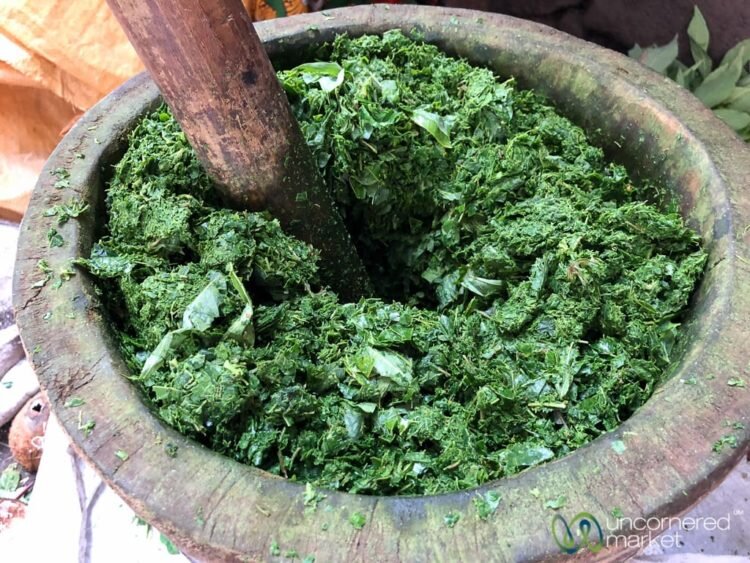Introduction: Malagasy Traditional Medicine and Cuisine
Madagascar, the fourth largest island in the world, is known for its unique biodiversity. The Malagasy people, who inhabited the island for over two millennia, have a rich cultural heritage and a unique cuisine that reflects their distinct traditions and beliefs. Traditional medicine has been an integral part of Malagasy culture, and it has influenced the local cuisine in many ways.
Malagasy cuisine is characterized by the use of a wide variety of herbs, spices, and vegetables that are grown locally. These ingredients are not only used for their culinary value but also for their medicinal properties. In this article, we will explore how Malagasy traditional medicine and herbal remedies have influenced the local cuisine, and how they can contribute to our health and well-being.
Malagasy Herbal Remedies and Their Culinary Uses
Malagasy traditional medicine is based on the use of medicinal plants, which are believed to have healing properties for various ailments. Many of these plants are also used in the local cuisine, where they add flavor and nutritional value to dishes. For example, the leaves of the ravintsara plant, which is traditionally used to treat respiratory diseases, are used to flavor soups and stews. The leaves of the kintana plant, which is used to treat digestive problems, are used to add flavor to rice dishes.
Other commonly used herbs and spices in Malagasy cuisine include ginger, garlic, turmeric, and lemongrass. These ingredients are known for their anti-inflammatory and anti-microbial properties, and they are used to enhance the flavor and nutritional value of dishes. For example, ginger and garlic are used to flavor meat and fish dishes, while turmeric is used to color and flavor rice dishes.
Medicinal Plants in Malagasy Cuisine: A Closer Look
Malagasy traditional medicine uses a wide variety of medicinal plants, many of which are also used in the local cuisine. Some of the most commonly used plants include the following:
- Voanjobory: This plant is traditionally used to treat stomach ache and diarrhea. Its leaves are used to flavor soups and stews.
- Tsiperifery: These berries are traditionally used to treat digestive problems and respiratory diseases. They are used to flavor meat and fish dishes.
- Tsaramaso: This plant is traditionally used to treat fever and flu. Its leaves are used to flavor soups and stews.
- Pachypodium lamerei: This plant is traditionally used to treat snake bites and respiratory diseases. Its roots are used to flavor meat and fish dishes.
Nutritional and Health Benefits of Malagasy Ingredients
Many of the herbs, spices, and vegetables used in Malagasy cuisine have nutritional and health benefits. For example, ginger has anti-inflammatory and anti-microbial properties, and it can help to reduce nausea and vomiting. Garlic is rich in antioxidants, which can help to prevent chronic diseases such as cancer and heart disease. Turmeric has anti-inflammatory properties, and it can help to reduce pain and inflammation.
In addition to their medicinal properties, many of these ingredients are also rich in vitamins and minerals. For example, the leaves of the ravintsara plant are rich in vitamin C and iron, while the leaves of the kintana plant are rich in calcium and vitamin A. By incorporating these ingredients into our diet, we can not only enjoy their delicious flavor but also reap their many health benefits.
Ethics and Sustainability in the Use of Traditional Medicine
While traditional medicine has many benefits, it is important to use it in an ethical and sustainable way. Many medicinal plants are becoming endangered due to overharvesting and habitat destruction. It is important to ensure that the use of these plants is sustainable and that local communities are involved in their conservation.
In addition, it is important to consider the cultural context of traditional medicine and to respect the knowledge and practices of local communities. Traditional medicine is not a substitute for modern medicine, and it should not be used to exploit or marginalize local communities.
Future Prospects for Malagasy Traditional Medicine in Cuisine
Malagasy traditional medicine has a rich history and a promising future in cuisine. By incorporating medicinal plants into our diets, we can not only enjoy their delicious flavor but also reap their many health benefits. In addition, the use of indigenous ingredients can help to promote local biodiversity and support sustainable agriculture.
As interest in traditional medicine and local cuisine grows, there is a growing need for research and education in this field. It is important to document and preserve traditional knowledge and to promote responsible and sustainable use of medicinal plants. By doing so, we can ensure that the rich cultural heritage of Malagasy traditional medicine is preserved for generations to come.

